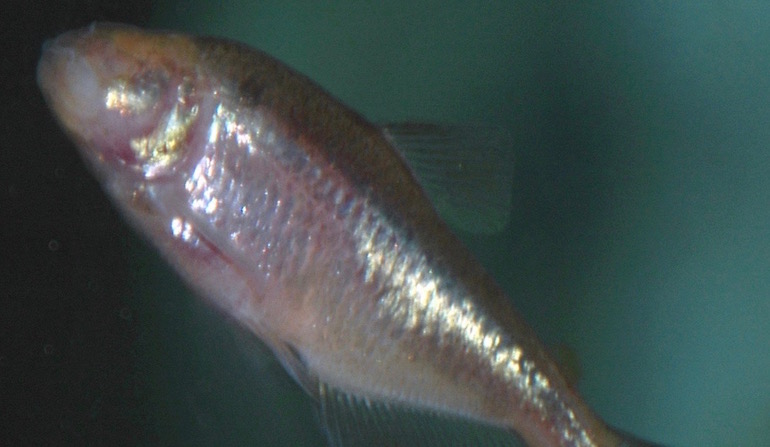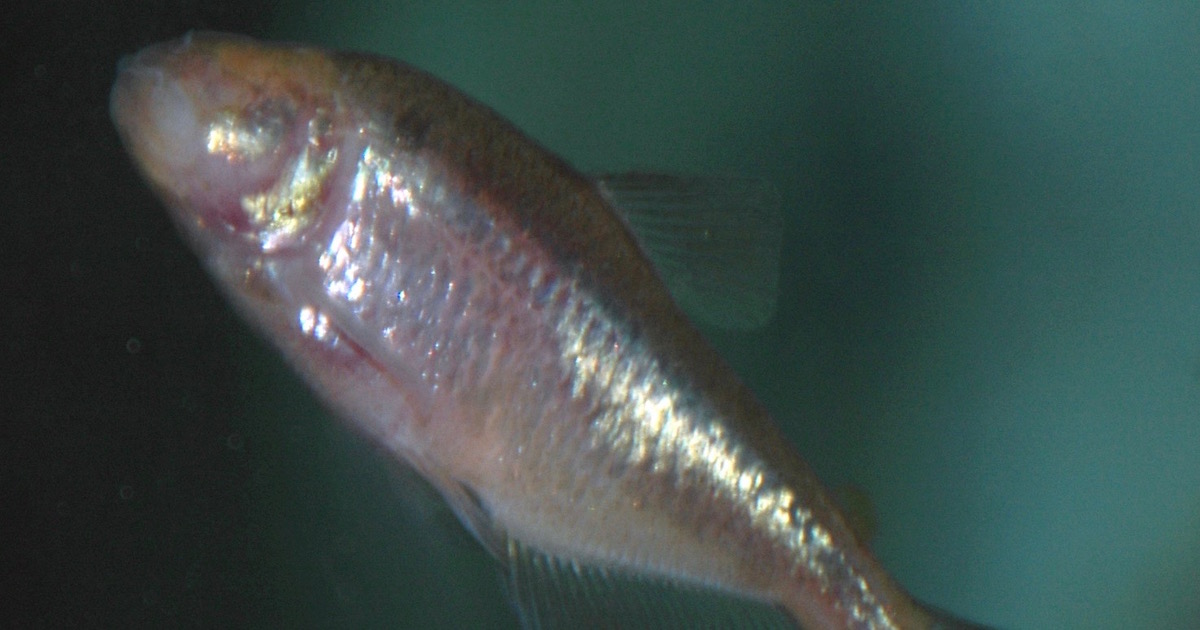 Evolution
Evolution
 Life Sciences
Life Sciences
Upsetting Another Evolutionary Icon — Blindness in Cave Fish Is Due to Epigenetics


A recent paper out of Brant Weinstein’s and William Jeffery’s laboratories on eye development, or the lack thereof, in blind cave fish has important implications for evolutionary theory (the paper is discussed here). The study finds that the loss of eyes in fish living in dark Mexican caves is not due to genetic mutations, as evolutionists have vigorously argued for many years, but due to genetic regulation. Specifically, methylation of key development genes represses their expression and with it eye development in this venerable icon of evolution. But the finding is causing yet more problems for evolutionary theory.
Darwin appealed to the blind cave fish in his one long argument for evolution. It is a curious argument in many ways, and the first sign of problems was in Darwin’s presentation where he flipped between two different explanations. At one point he explained the loss of vision in the cave fish as an example of evolutionary change not due to his key mechanism, natural selection. Instead, the Sage of Kent resorted to using the Lamarckian mechanism or law of “use and disuse.” Privately, Darwin despised and harshly criticized Lamarck, but when needed he occasionally employed his French forerunner’s ideas.Elsewhere Darwin hit upon a natural selection-based mechanism for the blind cave fish, explaining that elimination of the costly and unneeded vision system would surely raise the fitness of the hapless creatures.
This latter explanation would become a staple amongst latter-day evolutionary apologists, convinced that it mandates the fact of evolution. Anyone who has discussed or debated evolutionary theory with today’s Epicureans has likely encountered this curious argument that because blind cave fish lost their eyes, therefore the world must have arisen by itself.
Huh?
To understand the evolutionary logic, or lack thereof, one must understand the history of ideas, and in particular the idea of fixity, or immutability, of species. According to evolutionists, species are either absolutely fixed in their designs, or otherwise there are no limits to their evolutionary changes and the biological world, and everything else for that matter, spontaneously originated.
Any evidence, for any kind of change, no matter how minor, is immediately yet another proof text for evolution, with all that the word implies.
Of course, from a scientific perspective, the evidence provides precisely zero evidence for evolution. Evolution requires the spontaneous (i.e., by natural processes without external input) creation of an unending parade of profound designs. The cave fish evidence shows the removal, not creation, of such a design.
The celebration of such evidence and argument by Darwin and his disciples reveals more about evolutionists than evolution. That they would find this argument persuasive reveals their underlying metaphysics and the heavy lifting it performs.
We are reminded of all this with the news of Weinstein’s new study. But we also see something new: The insertion, yet again, of Lamarck into the story. The irony is that the epigenetics, now revealed as the cause of repressed eye development in the cave fish, hearkens back to Lamarck.
Darwin despised Lamarck and later evolutionists made him the third rail in biology. Likewise they have pushed back hard against the scientific findings of epigenetics and their implications.
The environment must not drive biological change.
False.
Well then, such biological change must not be transgenerational.
False.
Well, such inheritance must not be long lasting, or otherwise robust.
False again.
This last failure is revealed yet again in the new blind cave fish findings.
False predictions count. A theory that is repeatedly wrong, over and over, in its fundamental expectations, will eventually be seen for what it is.
The rise of epigenetics is yet another such major failure. Evolutionists pushed back against it because it makes no sense on the theory, and that means it cannot now be easily accommodated.
One problem is that epigenetics is complex. The levels of coordination and intricacy of mechanism are far beyond evolution’s meager resources.
Another problem is the implied serendipity. For instance, one epigenetic mechanism involves the molecular tags placed on the tails of the DNA packing proteins called histones. While barcoding often seems to be an apt metaphor for epigenetics, the tagging of histone tails can influence the histone three-dimensional structures. It is not merely an information-bearing barcode. Like the tiny rudder causing the huge ship to change course, the tiny molecular tag can cause the much larger packing proteins to undergo conformational change, resulting in important changes in gene accessibility and expression.
This is all possible because of the special, peculiar structure and properties of the histone protein and its interaction with DNA. With evolution we must believe this just happened to evolve for no reason, and thus fortuitously enabled the rise of epigenetics.
Another problem with epigenetics is that it is worthless, in evolutionary terms that is. The various mechanisms that sense environmental shifts and challenges, attach or remove one of the many different molecular tags to one of the many different DNA or histone locations, propagate these messages across generations, and so forth, do not produce the much needed fitness gain upon which natural selection operates.
The incredible epigenetics mechanisms are helpful only at some yet to be announced future epoch when the associated environmental challenge presents itself. In the meantime, selection is powerless and according to evolution the incredible system of epigenetics, that somehow just happened to arise from a long, long series of random mutations, would wither away with evolution none the wiser.
These are the general problems with epigenetics. In the case of the blind cave fish, however, there is a possible explanation. It is a longshot, but since this case specifically involves the loss of a stage of embryonic development, evolutionists can say that genetic mutations caused changes in the methylating proteins, causing them to be overactive.
This explanation relies on the preexistence of the various epigenetic mechanisms, so does not help to resolve the question of how they could have evolved. What the explanation does provide is a way for evolutionists to dodge the bullet presented by the specter of the cave fish intelligently responding to an environmental shift.
Such teleology in the natural world is not allowed. So the evolutionary prediction is that these proteins will be found to have particular random changes causing an increase in their methylation function, in particular at key locations in key genes (i.e., the genes associated with eye development).
That’s a long shot, and an incredible violation of Occam’s razor. My predictions are that (i) this evolutionary prediction will fail just as the hundreds that came before, and (ii) as with those earlier failures, this failure will do nothing to open the evolutionist’s eyes.
Photo: Mexican blind cave fish, by James St. John, via Flickr.
Cross-posted at Darwin’s God.
